Food and Fantasy in
Early Modern Japan
Food and Fantasy in
Early Modern Japan
Eric C. Rath

UNIVERSITY OF CALIFORNIA PRESS
Berkeley Los Angeles London
University of California Press, one of the most distinguished university presses in the United States, enriches lives around the world by advancing scholarship in the humanities, social sciences, and natural sciences. Its activities are supported by the UC Press Foundation and by philanthropic contributions from individuals and institutions. For more information, visit www.ucpress.edu.
University of California Press
Berkeley and Los Angeles, California
University of California Press, Ltd.
London, England
2010 by The Regents of the University of California
Library of Congress Cataloging-in-Publication Data
Rath, Eric C., 1967
Food and fantasy in early modern Japan / Eric C. Rath.
p. cm.
Includes bibliographical references and index.
ISBN 978-0-520-26227-0 (cloth : alk. paper)
1. FoodSocial aspectsJapan. 2. Food habitsJapan. 3. Cookery, JapaneseSocial aspects.
4. JapanSocial life and customs. I. Title.
TX724.5.J3R38 2010 |
394.120952dc22 | 2010005799 |
Manufactured in the United States of America
19 18 17 16 15 14 13 12 11 10
10 9 8 7 6 5 4 3 2 1
This book is printed on Cascades Enviro 100, a 100% post consumer waste, recycled, de-inked fiber. FSC recycled certified and processed chlorine free. It is acid free, Ecologo certified, and manufactured by BioGas energy.
To Dana Hiroko Rath
My favorite person to dine with
Contents
Illustrations and Tables
PLATES
Following page 84
1. Samurai stealing chimaki from the imperial palace
2. A knife ceremony (shikib ch
ch ), Ikama school
), Ikama school
3. Meal for an imperial New Years ohagatame ritual, Edo period
4. Snipe wing serving (hamori) and spiny lobster (ebi no funamori) dishes
5. Main tray and second banquet tray, from Shij -House Decorations for 7-5-3 Trays
-House Decorations for 7-5-3 Trays
6. Decorative platter (shimadai) with wing serving (hamori)
7. Sweets served to the emperor in 1626
8. Edo-period pattern book for sweet making
FIGURES
TABLES
Acknowledgments
While conducting research on this book, I was often asked how I became interested in Japanese food. My interest began in high school when I first went to a Japanese restaurant with friends. I recall deciding resolutely to order sushi, which was starting to become trendy in those days, and then being confronted with a plate of small pieces of fish that I had no idea how to eat. I owe a debt to my friends from high school for their adventurous ideas about dining and their encouragement as we were initiated into the mysteries of Japanese food.
My introduction to the idea that food could be an important subject of historical research occurred in a graduate seminar at the University of Michigan with Professor Teofilo Ruiz, a visiting scholar at the time. He not only provided students with much food for thought, but he also shared his freshly baked bread and some memorable beverages, which hinted at some of the side benefits of this topic of study. Two other professors at Michigan, Hitomi Tonomura and Jennifer Robertson, continue to inspire me, and I am grateful for their ongoing support of my work.
Fortunately, I have found good colleagues much closer to where I now work, at the University of Kansas. My colleague Tom Lewin graciously commented on an early draft of the manuscript for this book, and he has been supportive throughout my career at Kansas, assisting me in my work on various research projects and in negotiating university life. Akiko Takeyama advised me on the introduction and first chapter, which benefited from her comments. The book would not have been possible without the assistance of librarians of the East Asia Library at the University of Kansas, Michiko Ito and Vickie Doll. I owe a particular debt to Michiko Ito for obtaining many of the sources used in this study. Time spent in Japan allowed me to conduct research and write over several busy summers, and funding for my travels was provided by the University of Kansas Center for East Asian Studies, the Hall Center for the Humanities, the College of Liberal Arts and Sciencesincluding a New Faculty Research Award in 2000 and several general research awardsand the History Department. Part of my research was undertaken in the spring of 2006 after I was awarded a Hall Center for the Humanities Research Fellowship, and I am grateful to the Hall Centers director, Professor Victor Bailey. He also allowed me to cochair a faculty colloquium on food and culture with Barbara Shortridge in 2002. I am glad for the comments and advice provided by other participants in the colloquium, particularly Don Stull and Tom Averill. I also owe thanks to Kansas graduate students Tom Barker, Chikako Mochizuki, Melinda Varner, and Michael Hogg for their comments and encouragement.
Here and there, this work has benefited from seasoned advice and prompt answers by colleagues beyond Kansas, including Stephanie Assmann, Lee Butler, Katarzyna Cwiertka, Michael Kinski, Morgan Pitelka, and Constantine Vaporis. Ted Bestor reminded me to find the joy in food research, and he provided helpful information about the field of consumption studies. Merry Whites work has also inspired me, and I appreciate her encouragement and advice. My thanks also go to the anonymous readers and reviewers for their comments.
In Japan, several colleagues provided me with assistance, particularly Professors Nakamura Takako and Nakamura Yasushi of Kyoto Prefectural University, who came to my aid in numerous ways. Professor Higashiyotsuyanagi Shoko of the Ajinomoto Foundation for Dietary Culture guided me through the archives there and assisted me in obtaining illustrations. Professor Jinnai Tomiko helped me understand the history of the Kawabata household and proved to be a treasure house of knowledge about Japanese cuisine. I also thank Professor Kasaya Kazuhiko of Nichibunken for his help in the past, and the librarians and staff at the Kaga Bunko in the Tokyo Central Metropolitan Library, Iwase Bunko in Nishio City, the Kyoto Prefectural Library, and the Ky gashi Shiry
gashi Shiry kan in Kyoto.
kan in Kyoto.
During the spring of 2006, I lived in Kyoto with my daughter, Dana, who was allowed to attend Shoran Kindergarten. The staff; her kindergarten teacher, Matsunaga Mayumi; and the parents were warm and welcoming to us both. They shared their intimate knowledge of Kyotos foodways and helped me craft better box lunches. The Koshiba family, particularly Hideo and Ruriko, assisted me many times and in many ways, to the point that I cannot ever hope to repay them. Jonah Salz and Tomoko Onabe are my best friends in Kyoto and taught me a lot about Japan, including its food.
Beyond personal and academic introductions to Japanese food, my most profitable learning experience came from my work at a small Kyoto restaurant. Waitstaff never expect tips in JapanI took away much more from the experience of waiting tables at Ky


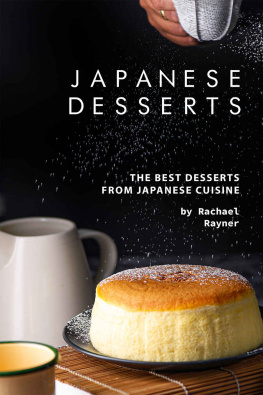
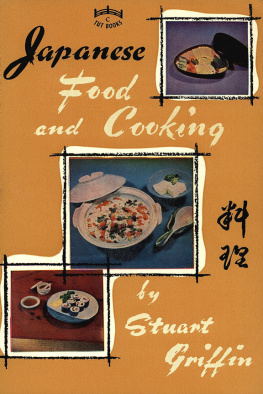
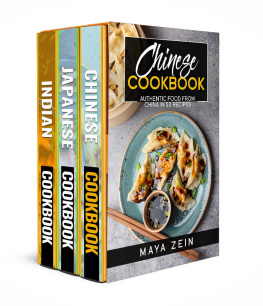

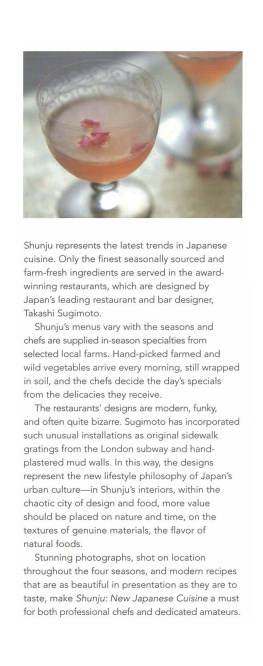
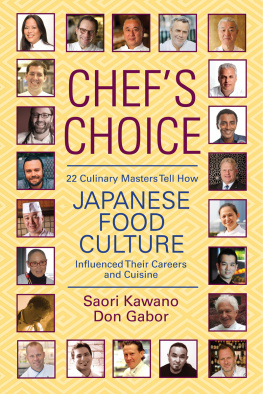
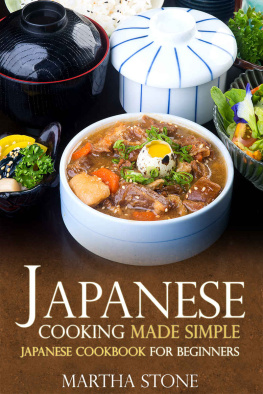
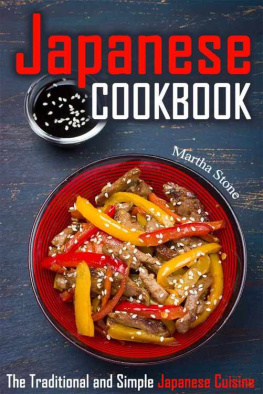
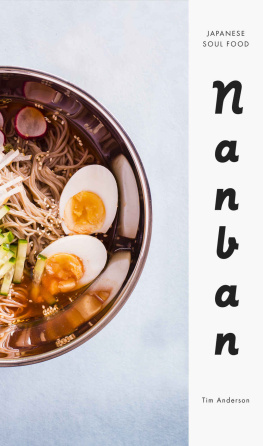
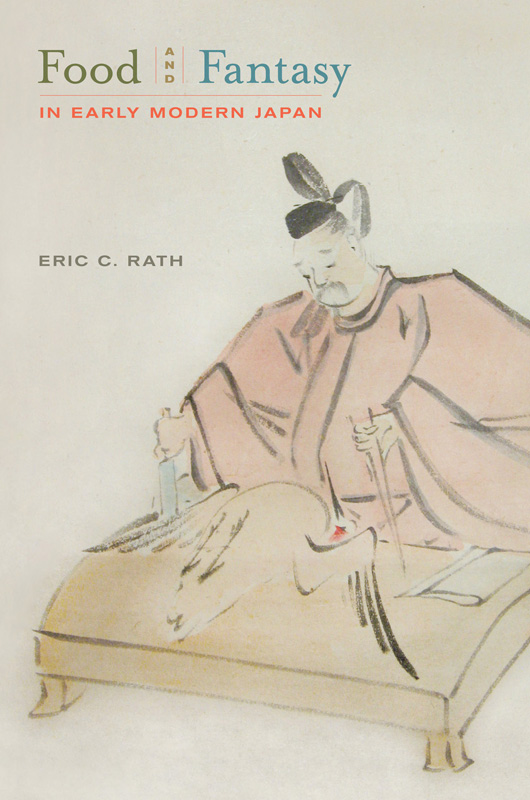

 ch
ch gashi Shiry
gashi Shiry